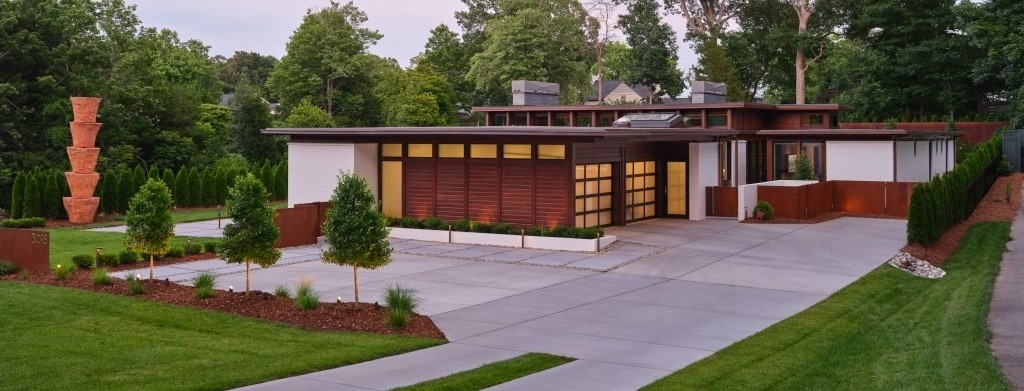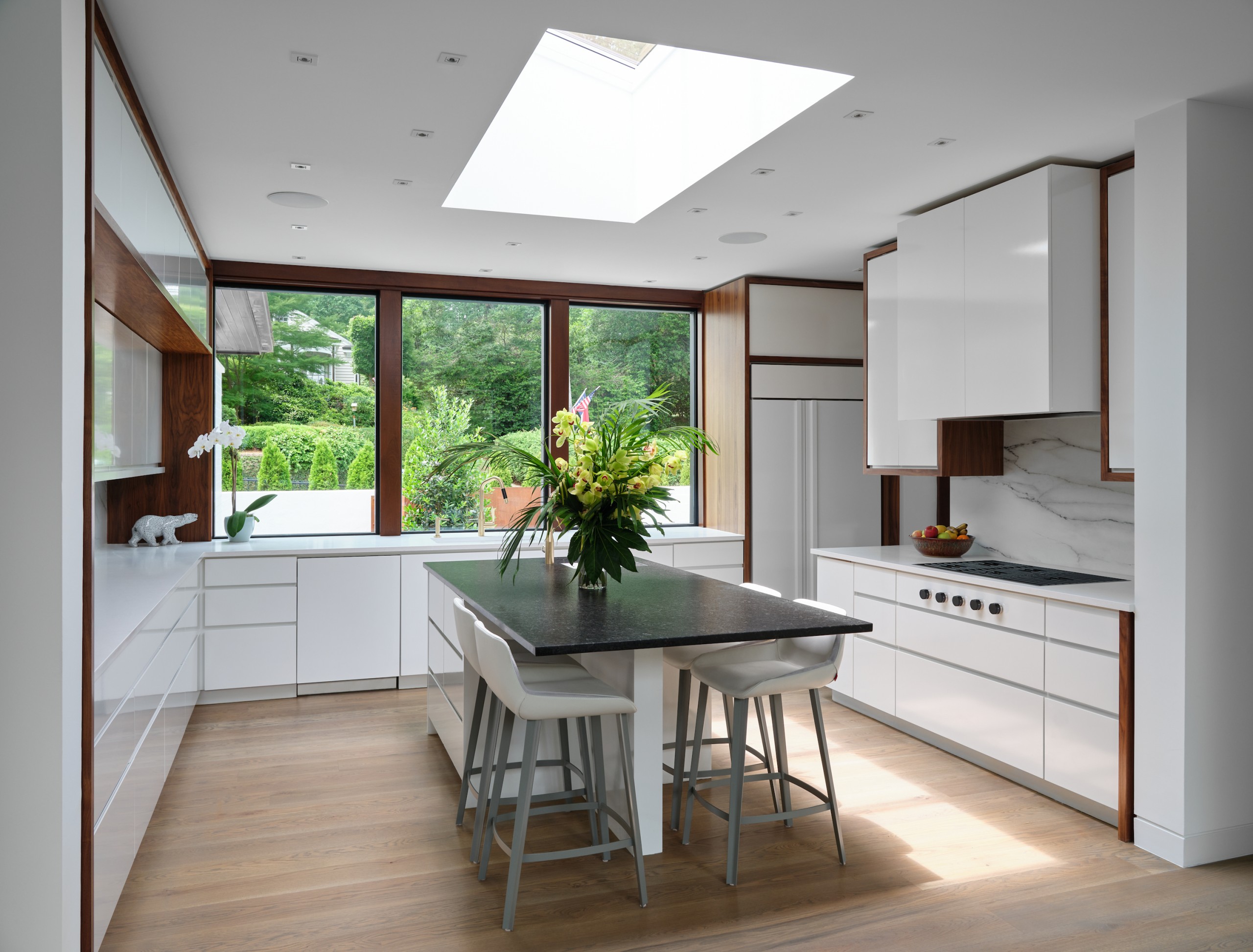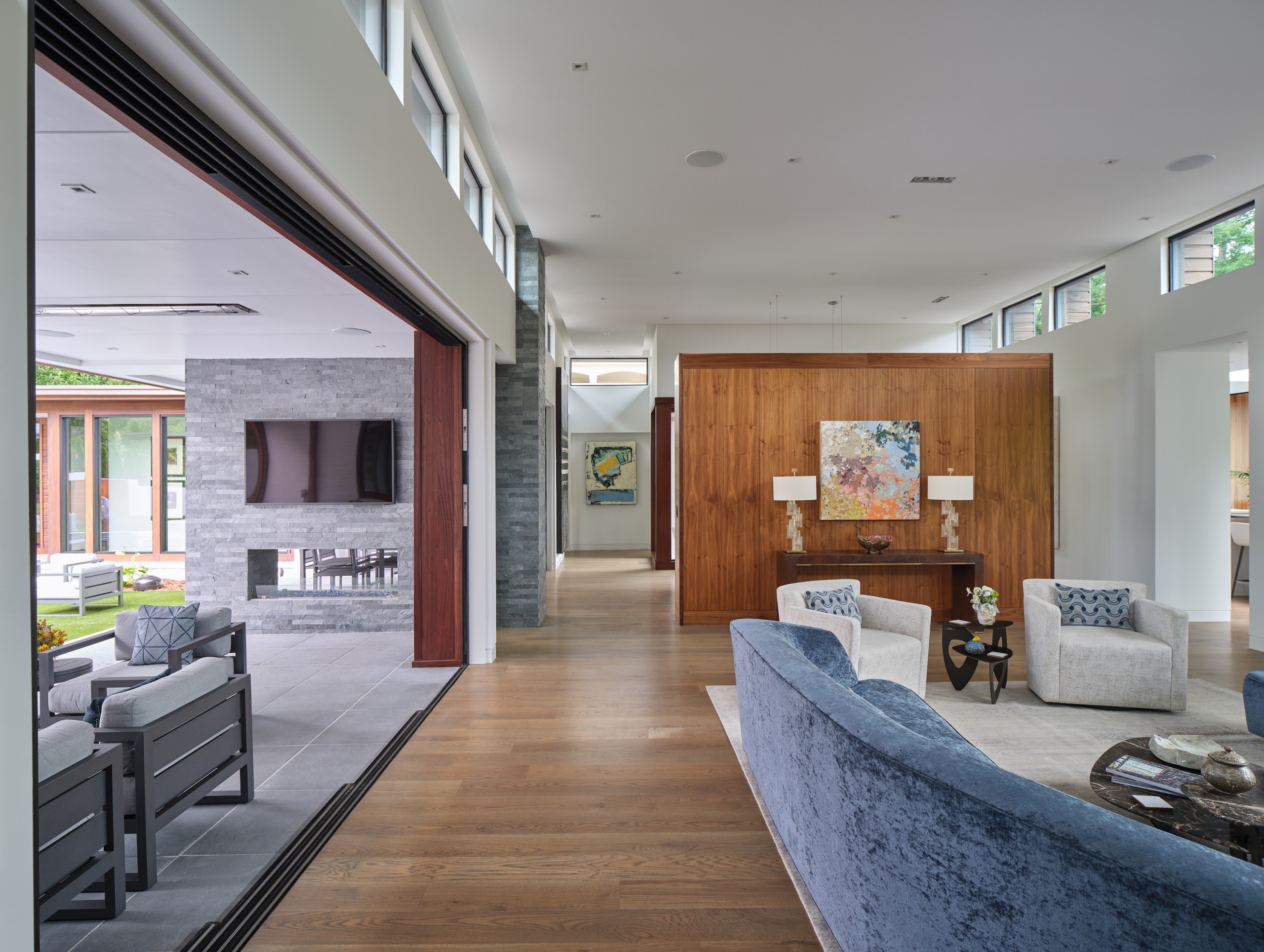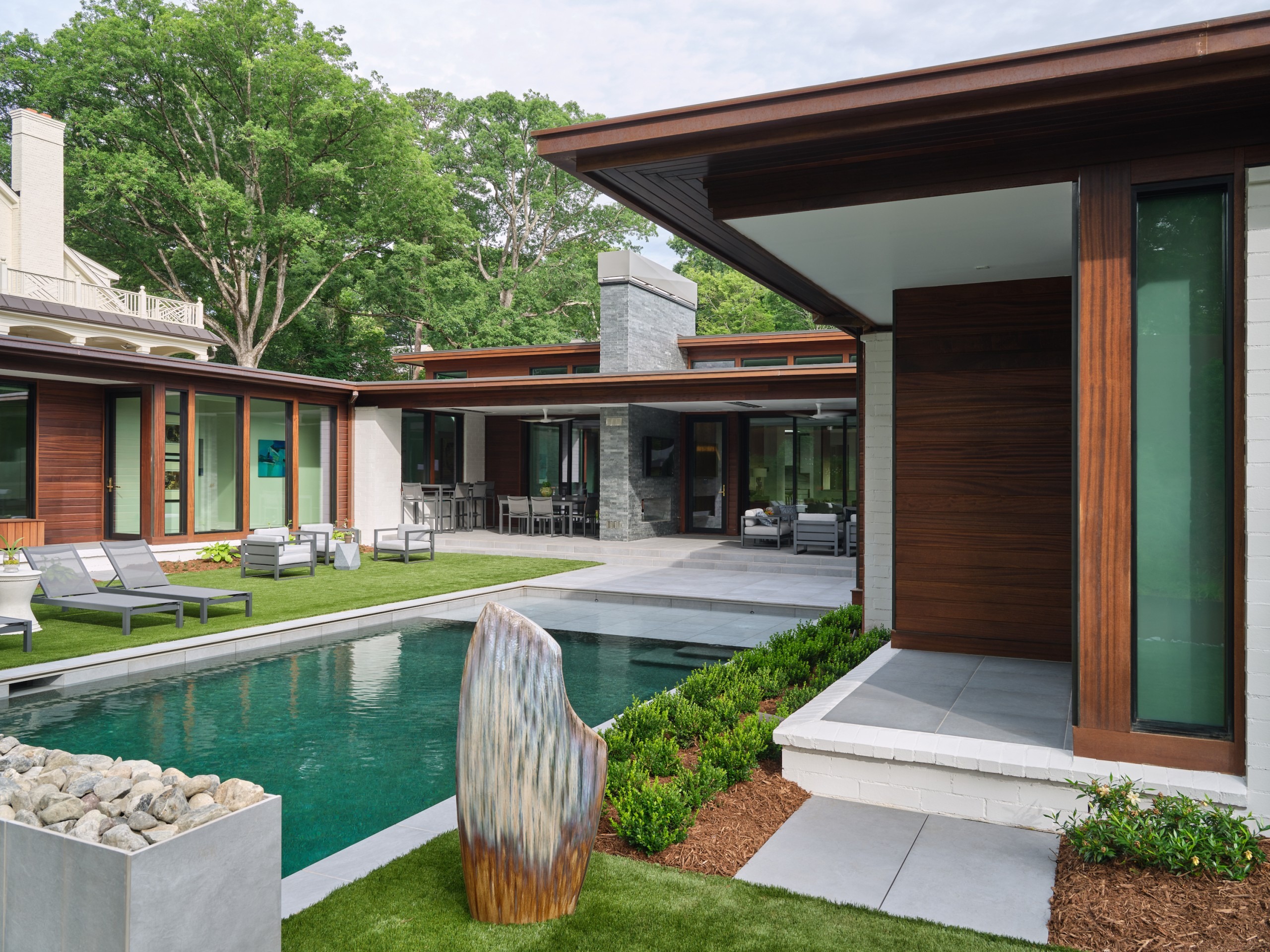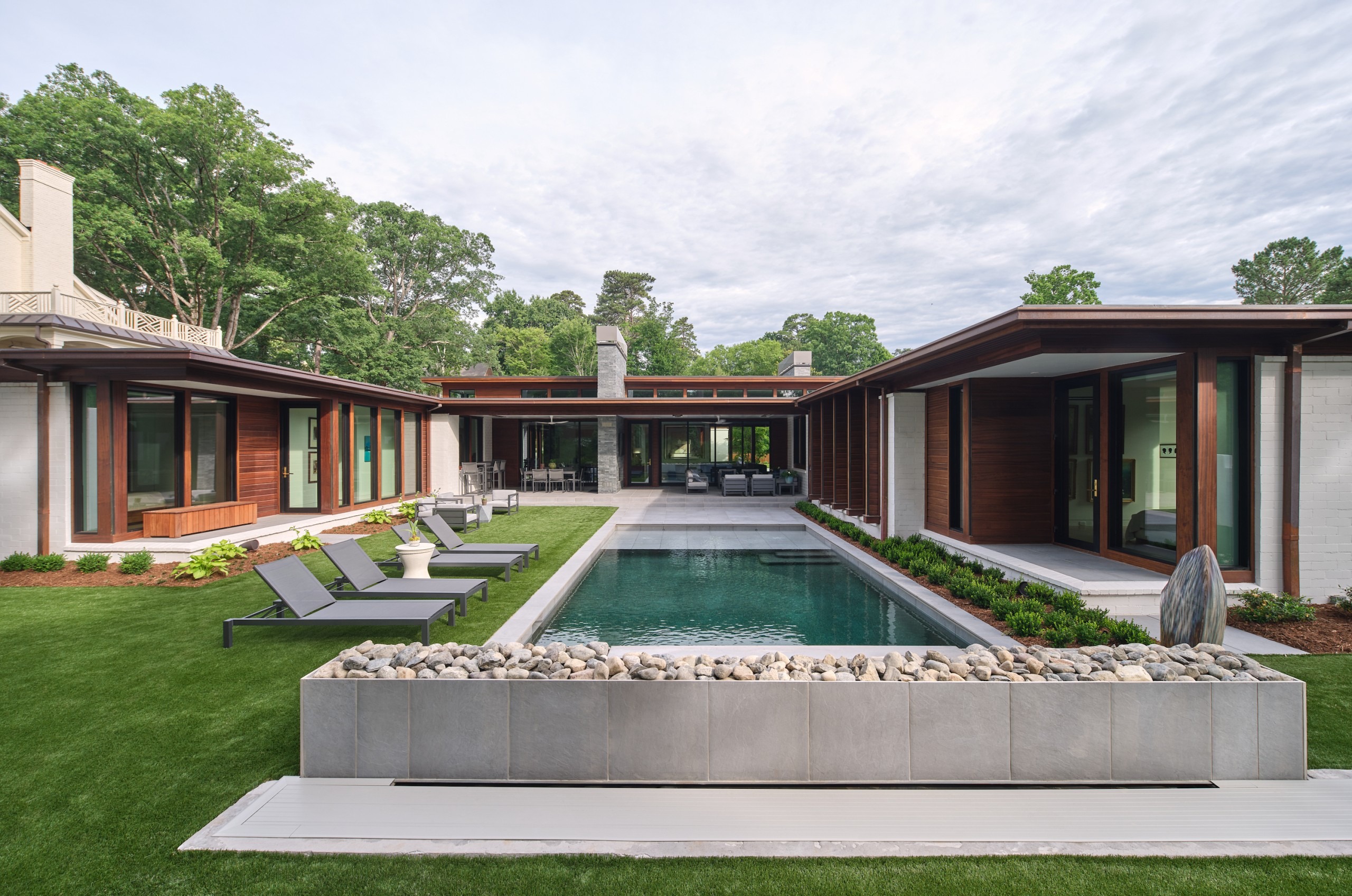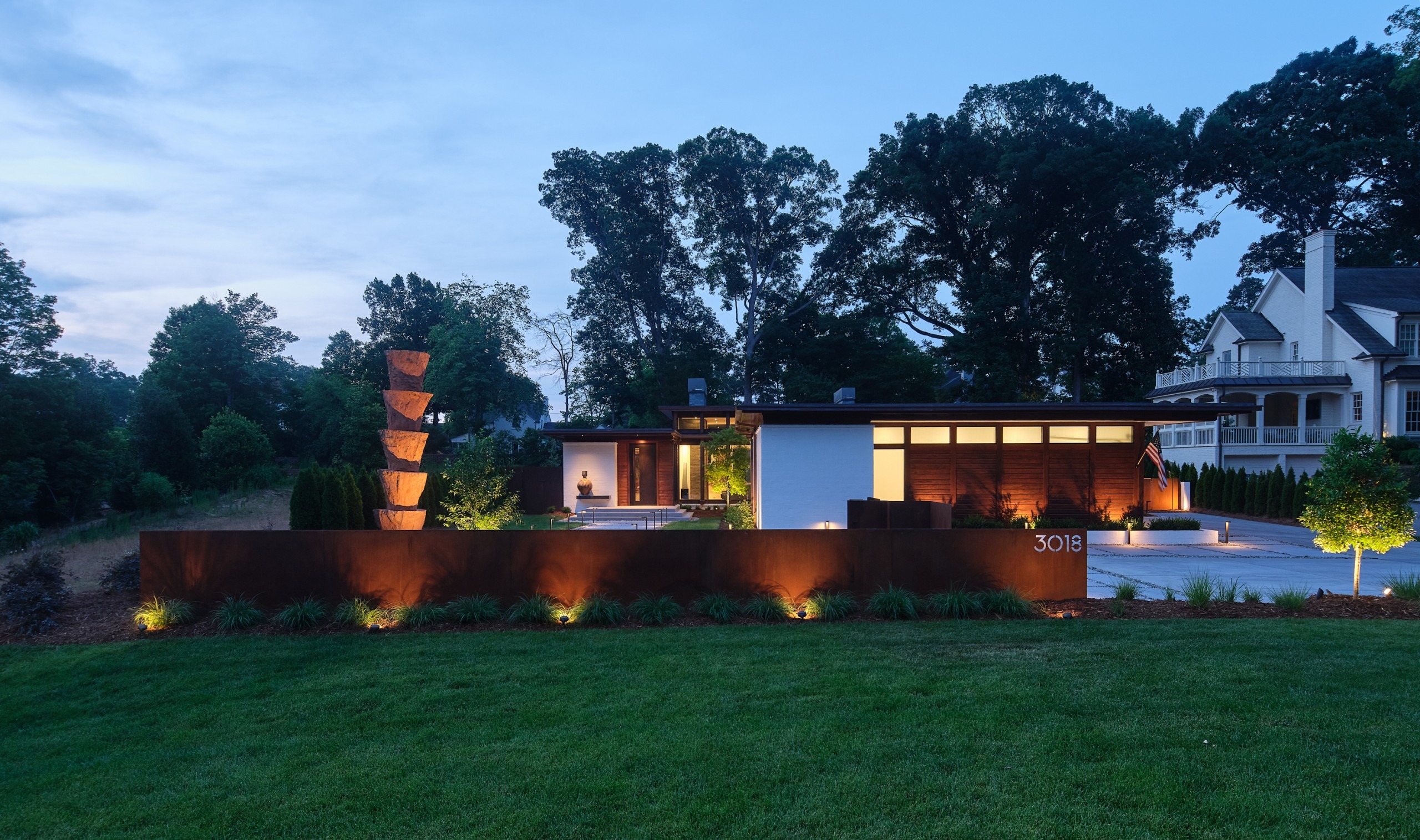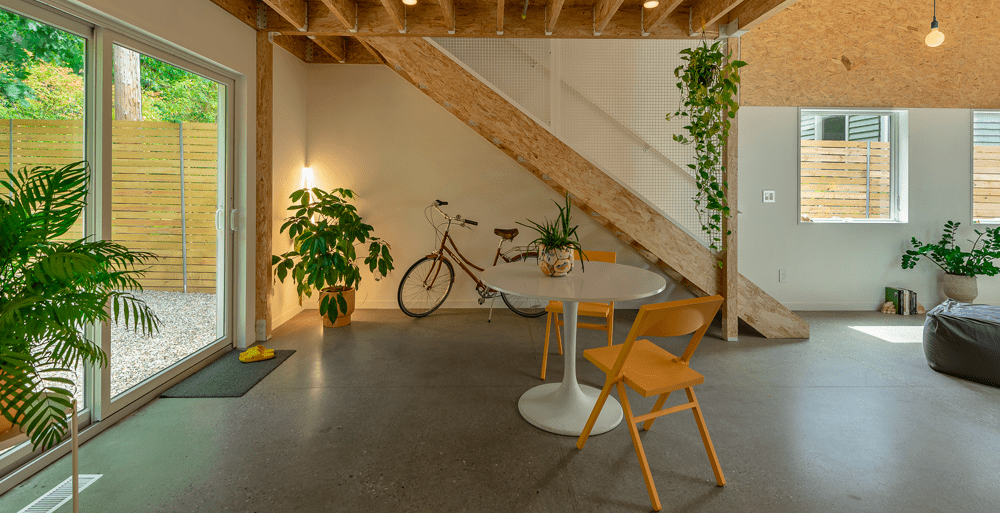In a 2019 interview with the late Michael Ross Kersting, the architect told me about a project his firm was designing in Raleigh.
“It’s more a gallery than a house,” he said.
He was right.
The Robbins House in Country Club Hills was designed for a pair of empty-nesters with a strong commitment to architecture and the arts. It was completed last year, before the architect’s passing.
Kersting teamed up with project architect Toby Keeton, now a partner in Kersting Architecture, to design the home.
“Michael and I were looking at the work of Eero Saarinen and Louis Kahn,” Keeton says. “Michael modeled his studio after those midcentury master/apprentice practices, and that’s what I was, working alongside him.”
Keeton’s and Kersting’s working dynamic evolved over the 15 years they practiced together. “My role was to be in charge of solving and executing the structure, and then getting into the fine detailing,” Keeton says.
For the Robbins House, there were plenty of precedents around their clients’ site. Country Club Hills was a favored section of Raleigh for architecture professors from N.C. State’s School of Design. There, they practiced their distinct brand of midcentury modern architecture in the 1950s and ’60s. Among those who designed and built there were James Fitzgibbon, Brian Shawcroft, and Henry Kamphoefner, the founder and dean of the School of Design.
“We had a goal of looking at the Country Club Hills neighborhood, with its jaw-dropping midcentury modern homes,” he says. “We were swooning over that stuff.”
At the same time, they were bemoaning the more recent work in the neighborhood. “It’s devoid of any kind of sensitivity, and we took it on as a mantra: ‘Stop it here!’” he says. “We wanted to add something to the neighborhood, because it was such a proving ground for all those N.C, State guys.”
They’d met their clients during a motor coach tour of Wilmington architecture, and found kindred spirits. “North Carolina Modernist Housing brought people to Wilmington by the busloads,” he says. “We met the Robbins through that organization, and they were advocates for art and architecture – they approached us on that level.”
Early conversations about the house centered on Eero Saarinen’s Miller House in Columbus, Indiana, as well as Louis Kahn, touchstones for a certain architectural pedigree. “That was something that as team, we collaborated with the clients on pretty closely,” he says. “We talked about Kahn, his ‘served’ and ‘serving’ spaces – and the idea of good architecture being integrated to make living entertaining.”
Debbie Robbins chairs an artists’ advocacy organization, while her husband is an attorney. They’re advocates of art in North Carolina – and true patrons to boot. “They support artists, and Debbie is a talented painter in her own right,” he says. “They display their collection and host events to support that organization.”
The architects wanted to create a seamless, efficient building that would serve as home and gallery for the couple, and that could be an entertainment venue too. “We were intentional with that,” he says.
They succeeded in that endeavor, and in recalling Raleigh’s modernist history. The new residence is a restrained and minimal beauty, filled inside and out with art of a tasteful nature.
Michael Kersting passed away unexpectedly in August, but he left behind more than this strikingly quiet home and gallery in Raleigh. His firm designed some of the more innovative oceanfront homes on Carolina’s coast, including residences on Figure Eight Island, Wrightsville Beach, Morehead City and Pine Knoll Shores.
But his studio – and his master/apprentice approach to the practice of architecture – also sprinkled talented modernists across the state like gold dust. Among those who learned with him are Robby Johnson in Raleigh, Hunter Coffee in Boone, and Kevin Pfirman in Wilmington.
They’re all young, they’re all practicing on their own now, and they’re all part of the legacy that Michael Ross Kersting left behind.
On Wednesday: How Kersting, Keeton, and their clients designed the Robbins’ home.
For more, go here.
Photos by Keith Isaacs

